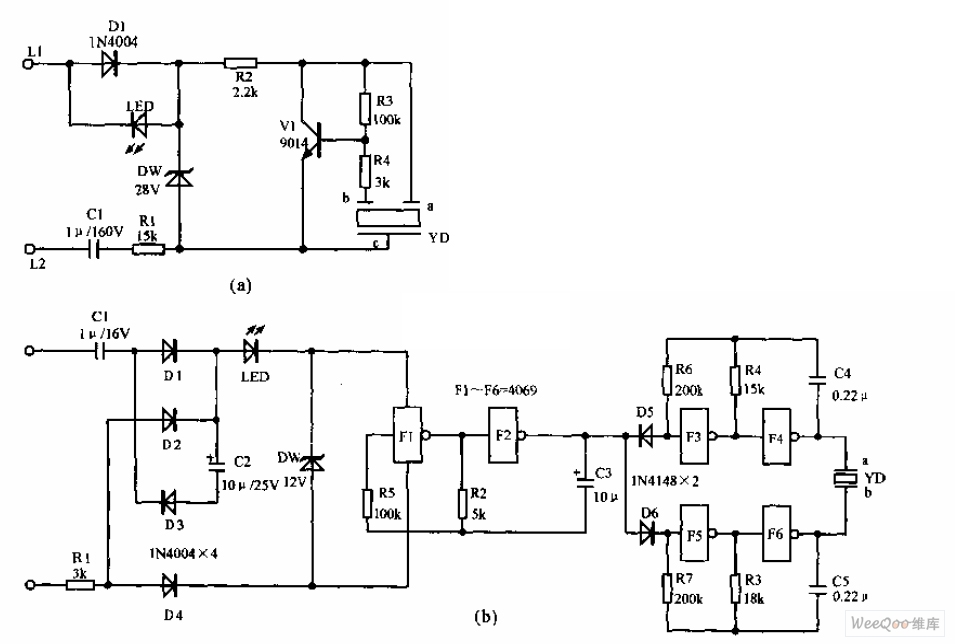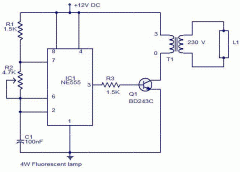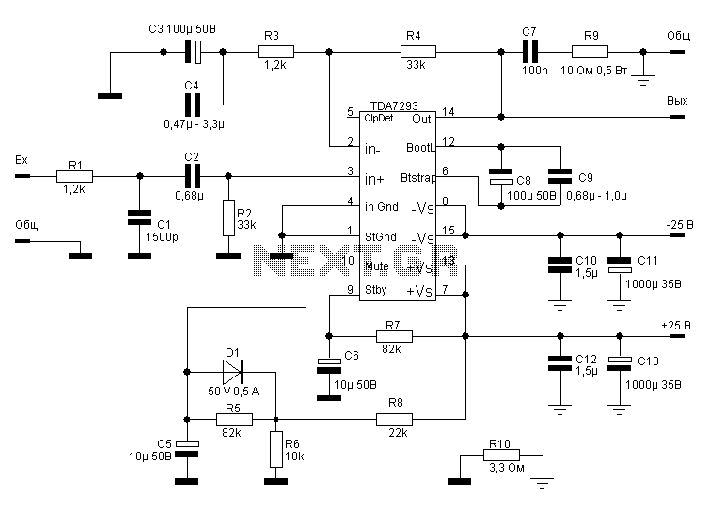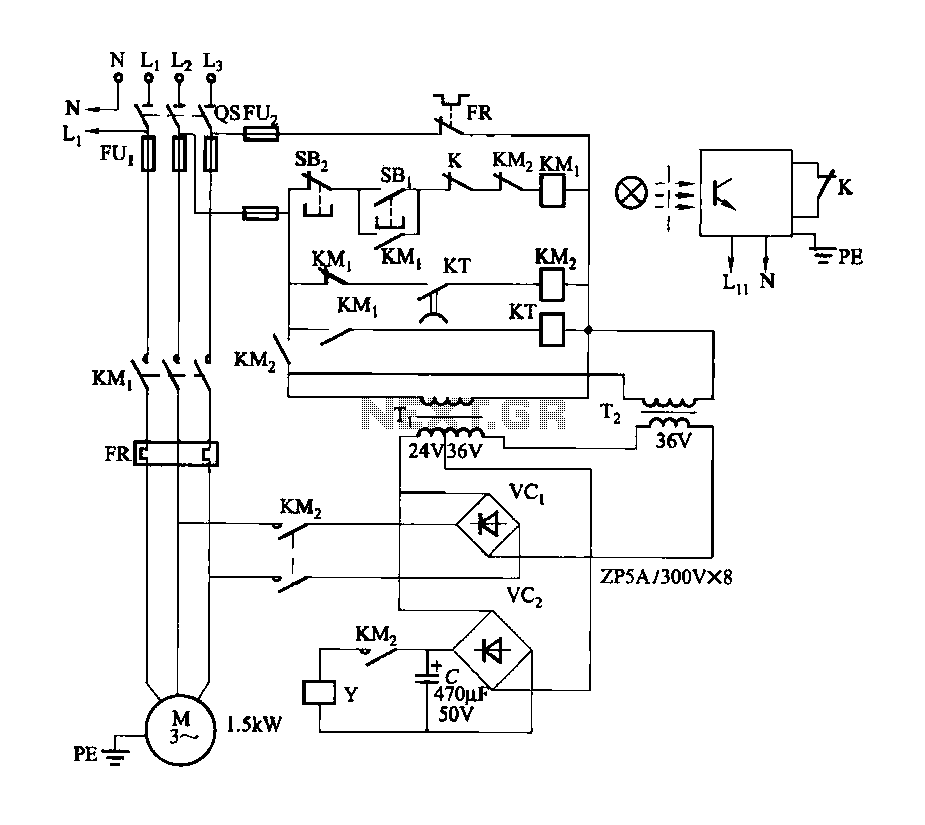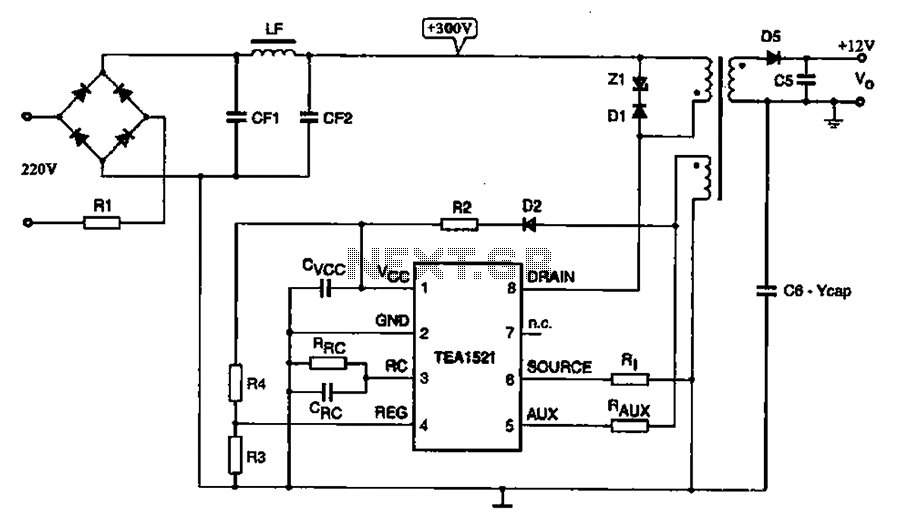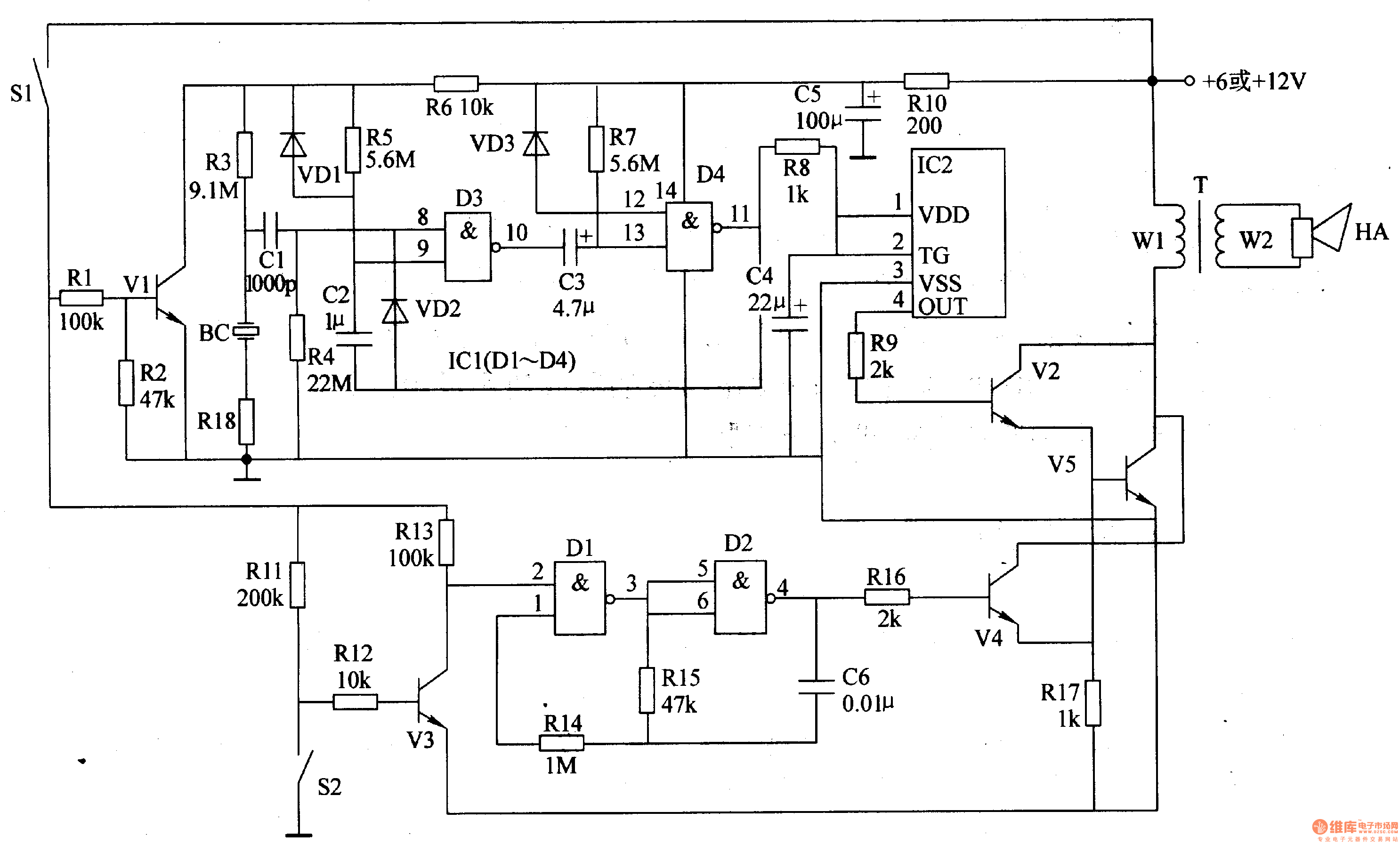
Automatic Cooler Fan Circuit for Amplifiers
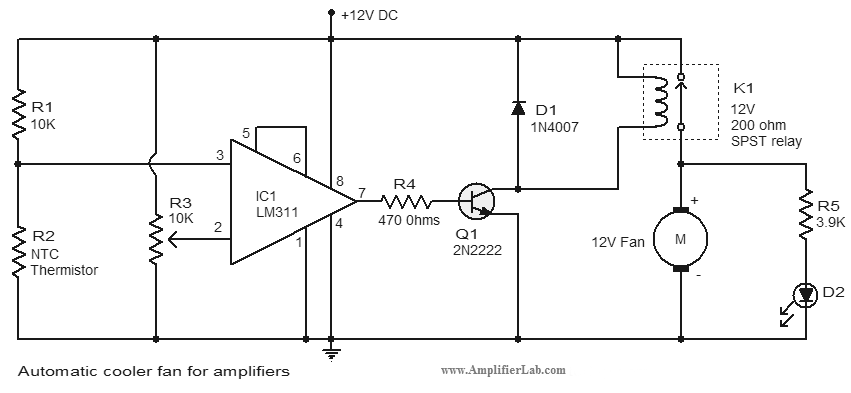
An automatic cooler fan for amplifiers is a circuit designed to conserve power in amplifier circuits. This circuit activates the fan.
The automatic cooler fan circuit for amplifiers operates by utilizing temperature sensors to monitor the heat generated by the amplifier during operation. When the temperature exceeds a predetermined threshold, the circuit activates a cooling fan to dissipate heat, thereby preventing overheating and enhancing the longevity of the amplifier.
The circuit typically includes a temperature sensor, such as an NTC thermistor or a thermocouple, which detects the temperature of the amplifier. The output from the temperature sensor is fed into a comparator circuit, which compares the sensor output with a reference voltage. If the temperature surpasses the reference level, the comparator activates a relay or a transistor switch that powers the fan.
In addition to the basic components, the circuit may include a delay timer to prevent the fan from turning on and off rapidly, which could lead to wear and tear. The timer allows the fan to remain operational for a specified duration after the amplifier has cooled down below the threshold temperature, ensuring efficient cooling without unnecessary power consumption.
The design can also incorporate features such as adjustable temperature thresholds and fan speed control, allowing for customization based on the specific requirements of the amplifier being used. This circuit is particularly beneficial in high-power amplifiers where heat generation is significant, ensuring optimal performance while minimizing energy usage.Automatic cooler fan for amplifiers is a circuit introduced for the purpose of saving power in amplifier circuits. This circuit switches ON. 🔗 External reference
The automatic cooler fan circuit for amplifiers operates by utilizing temperature sensors to monitor the heat generated by the amplifier during operation. When the temperature exceeds a predetermined threshold, the circuit activates a cooling fan to dissipate heat, thereby preventing overheating and enhancing the longevity of the amplifier.
The circuit typically includes a temperature sensor, such as an NTC thermistor or a thermocouple, which detects the temperature of the amplifier. The output from the temperature sensor is fed into a comparator circuit, which compares the sensor output with a reference voltage. If the temperature surpasses the reference level, the comparator activates a relay or a transistor switch that powers the fan.
In addition to the basic components, the circuit may include a delay timer to prevent the fan from turning on and off rapidly, which could lead to wear and tear. The timer allows the fan to remain operational for a specified duration after the amplifier has cooled down below the threshold temperature, ensuring efficient cooling without unnecessary power consumption.
The design can also incorporate features such as adjustable temperature thresholds and fan speed control, allowing for customization based on the specific requirements of the amplifier being used. This circuit is particularly beneficial in high-power amplifiers where heat generation is significant, ensuring optimal performance while minimizing energy usage.Automatic cooler fan for amplifiers is a circuit introduced for the purpose of saving power in amplifier circuits. This circuit switches ON. 🔗 External reference
